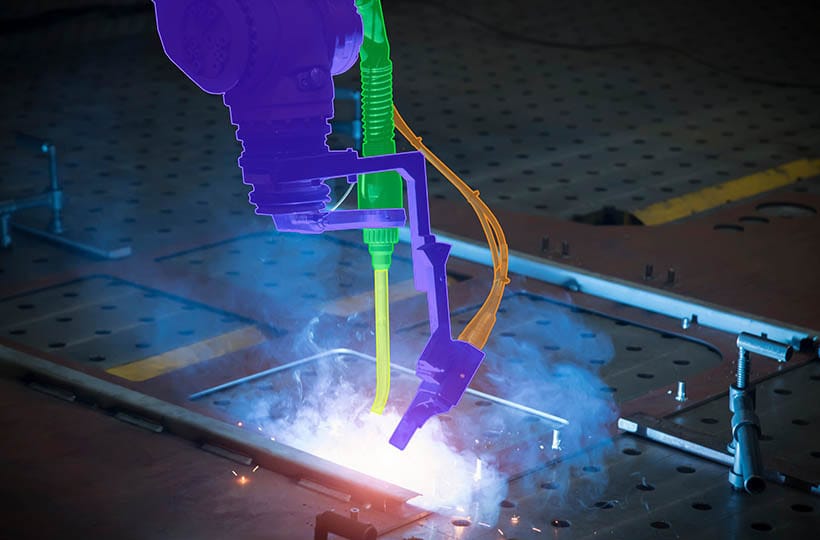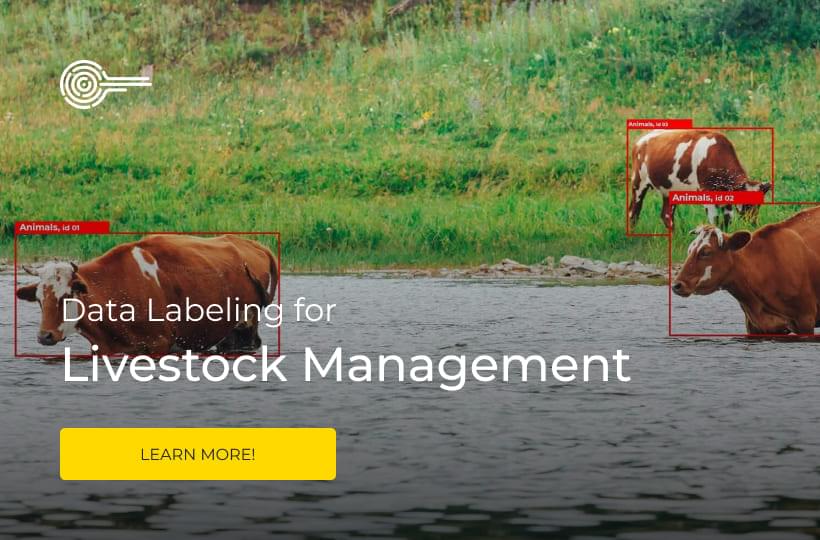Integrating MLOps into Your Data Annotation Pipeline for Continuous Model Improvement

Integrating MLOps into your data annotation pipeline is key for ongoing model enhancement. MLOps, or Machine Learning Operations, integrates machine learning models into production. It manages their lifecycle. MLOps can automate and improve data annotation. This will boost data quality and maximize our models' performance. We aim to build an MLOps data annotation pipeline. It must be efficient, reliable, and scalable. It boosts efficiency and quickly solves problems.
Understanding MLOps in Machine Learning
MLOps links the development and operations of machine learning. Its importance is in the efficient management, upgrade, and deployment of ML models. By 2025, global daily data generation will hit 463 exabytes. We must find efficient workflows and strategies for deploying models.

What is MLOps?
It uses DevOps principles to solve problems in machine learning model development, including preparing data for training models and ensuring smooth integration and delivery. A closer look at MLOps reveals that CI/CD pipelines are crucial. They make deploying models quickly and reliably easier while fostering better teamwork between data scientists and operations folks.
• Data version control. Helps track changes, facilitates collaboration, and allows you to revert to previous datasets if necessary.
• Model version control. Records each version of a model along with its parameters and training data so that it can be recreated if necessary.
Benefits of MLOps:
• Efficient collaboration.
• Increased speed.
Key Components of MLOps
An MLOps strategy must do five things. It must control data versions and train and validate models. It must automate deployments and monitor performance. These components are organized into distinct layers as follows:
• Layer Components
• Run Layer: Data Collection, Model Training
• Pipeline Layer: Build, Deploy, Monitor
• Component Layer: Data, Code, Artifacts
• Infrastructure Layer: Middleware, Infrastructure
So, we can say that workflow automation significantly increases efficiency at all stages. For example, simplifying data labeling improves data integrity and reduces the time it takes to do manual annotation. MLOps offers a clear and practical framework; it manages the process from model launch to its deployment and refinement later.
There are two types of data annotation:
• Image labeling
• Video annotation
Challenges in Data Annotation
The main challenge is the scalability of large amounts of data, as this burdens the system and makes it difficult to verify the finished data quickly.
Incorporating MLO into Data Annotation helps establish feedback loops to improve collaboration between teams in real-time and improves workflow automation.
Improving data annotation through automation
Organizations are now investing in advanced technologies to enhance synthetic data tools. This approach makes it easier and faster to integrate these solutions into deployment workflows, optimizes resource utilization, and delivers high-quality data annotations.
Establishing Feedback Loops for Continuous Improvement
We must systematically evaluate and audit models for bias, safety, reliability, and privacy, for this is vital for their credibility and interpretability because it lets us adapt to shifting demands and fosters a culture of constant improvement. Organizations can ensure data quality and model enhancement by integrating ongoing feedback mechanisms. Systematic audits and MLOps in data annotation will boost the machine learning sector. It's expected to grow from $21.17 billion in 2022 to $209.91 billion by 2029. MLOps allows organizations to merge automation, data management, and model deployment. It leads to scalable, sustainable AI solutions.
Criteria for Assessing Annotation Quality
Your data annotations must be excellent for practical model training and deployment. We focus on metrics assessing quality, measuring efficiency, and improving assurance methods.

Common Metrics Used
Metrics for evaluating annotation quality include accuracy, precision, recall, and inter-annotator agreement.
How to measure annotation performance
It is a balance between speed and accuracy for training and deploying a model. It can be calculated by how many datasets were entered, how often errors were made, and the time to verify the finished data.
Quality improvement methods
To improve your quality, you often need a period of adaptation, regularly reviewing the requirements and common errors that were encountered earlier. The problem may be that some tools are not suitable for this type of data; some tools will be better.
Facilitating Continuous Improvement Through Iterative Approaches
It must use iterative methods. This will enhance machine learning models and optimize the data annotation workflow. Organizations can improve model performance by refining both models and annotation methods. They must do this in a systematic way for lasting results. This ongoing adaptation enables effective management of emerging data and shifting requirements.
Significance of Iterative Approaches
Iterative methodologies within MLOps pipelines support ongoing assessment and enhancement. Experts say model-assisted labeling can annotate an image with just two clicks. Also, confidence threshold sliders streamline annotation. They filter results based on the model's confidence levels.
Leveraging User Feedback
Feedback plays a critical role in the data labeling process. In order to improve annotation methods and tools, both annotators and end users need to be involved.
Adapting to changing requirements
While automated data collection and preprocessing are now standard, the resulting data still requires human review.
Ensuring compliance and ethics
Regulations such as GDPR and CCPA require strict adherence to data privacy standards. These include obtaining user consent, anonymizing sensitive data, and requiring transparency about data usage.
Data privacy management
Organizations must adhere to established requirements to protect personal information and prevent unauthorized access, encrypt personal data, and have access controls for each data record.
Real-world examples from different industries
MLOps has great potential in the future to improve predictive diagnostics and planning in key human industries. The medical, automotive, and other industries are constantly moving forward, constantly minimizing human involvement in most workflows with the help of AI.
Future trends in MLOps and data annotation
By 2024, there were over 90 MLOps tools and platforms available, and the tools that exist now help track experiments and automatically label datasets.
FAQ
What is MLOps?
MLOps, or Machine Learning Operations, merges machine learning development with DevOps, which improves the life cycle and streamlines the machine learning lifecycle.
What are the benefits of implementing MLOps?
Solid MLOps practices automate and improve data management. In addition, they provide a boost to machine learning solutions, making them reliable and scalable, which enhances model performance.
What are the key components of MLOps?
Key components are data version control, model training, validation, deployment, and performance monitoring.
What types of data annotations are there?
Common types are image labeling, text, video, audio, and 3D point cloud annotations.
What challenges are faced in data annotation?
Challenges include scalability, accuracy, and large datasets. We must ensure high quality and reduce human errors.
What measures ensure quality assurance in data annotation?
We take several measures.
They include:
• double-checking processes
• using advanced tools
• regular audits
• training annotators on best practices and updates.
What steps are involved in establishing an efficient data annotation pipeline?
Steps include setting up clear annotation standards, selecting the right tools, training annotators, continually assessing annotation accuracy, and leveraging workflow automation.
What are some best practices to enhance annotation efficiency?
Best practices include regular audits, leveraging automation tools, maintaining clear guidelines, and fostering a feedback-oriented culture.
How does MLOps improve collaboration between teams in data annotation?
MLOps fosters seamless collaboration by standardizing processes, automating workflows, and creating structured feedback loops. This ensures continuous improvements in data annotation quality and efficiency.
How is automation applied in data annotation with MLOps?
Automation tools help reduce human errors and speed up repetitive, time-intensive parts of the annotation process. This allows for faster and more accurate data labeling.
How do feedback loops aid continuous improvement in data annotation?
Continuous feedback loops ensure that the quality of annotated data is perpetually enhanced. This is done by adapting to new requirements and insights from ongoing model performance analysis.
What standard metrics are used to evaluate annotation quality?
Metrics such as accuracy, precision, recall, and inter-annotator agreement are commonly used to assess the effectiveness of the annotation process.
How can annotation efficiency be measured?
Efficiency can be measured by benchmarking the time taken for annotation tasks, analyzing error rates in annotated datasets, and continuously monitoring and improving workflow automation.
What techniques enhance quality assurance in data annotation?
Techniques include double-checking processes, using advanced tools to reduce ambiguity, regular training for annotators on updates and best practices, and implementing systematic quality control measures.
Why are iterative processes critical in data annotation?
Iterative processes allow for continual refinement of both machine learning models and annotation practices.
What are the key considerations in defining data governance policies?
Key considerations include clear data handling policies, compliance with regulatory requirements, and meticulous management of user data privacy.
How do you ensure compliance and ethics in MLOps?
Compliance and ethics are ensured by adhering to global standards, managing data privacy, executing clear data handling policies, and ensuring transparency in data usage.
How is data privacy managed in MLOps?
Data privacy is managed through rigorous policies, user consent practices, anonymization of sensitive information, and transparent data usage guidelines.
Can you provide examples of successful MLOps implementations?
Successful implementations in the healthcare, automotive, and finance industries provide insights into scalable data operations and secure data handling and illustrate the benefits of a well-integrated MLOps strategy.
What lessons can be learned from real-world MLOps success stories?
Lessons include the importance of cross-functional teamwork, maintaining strategy flexibility, and realizing significant ROI from investing in sophisticated data operations and workflow automation.
What are the key takeaways for organizations from MLOps case studies?
Key takeaways include the need for robust data management practices, continuous model improvement, the importance of data privacy, and the value of adaptive and scalable MLOps solutions.
What emerging technologies are impacting MLOps?
Emerging technologies include AI-driven automation, advanced natural language processing, and sophisticated data management tools. These improve the efficiency and accuracy of data operations.
How can organizations prepare for the future of data annotation?
Preparation involves staying updated with technological advancements, continuous learning, strategic planning to integrate new tools and methodologies, and maintaining flexible, adaptive systems.

